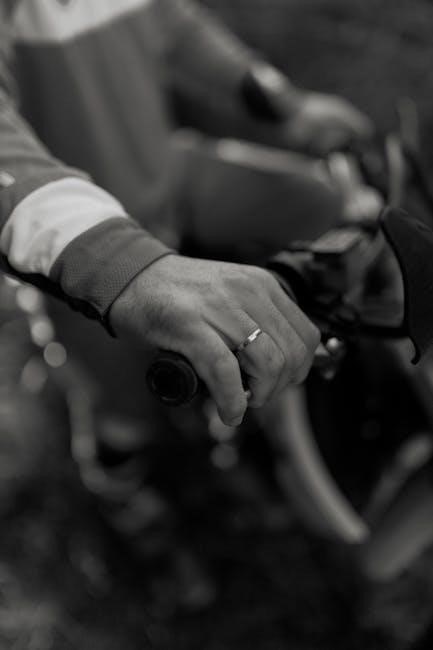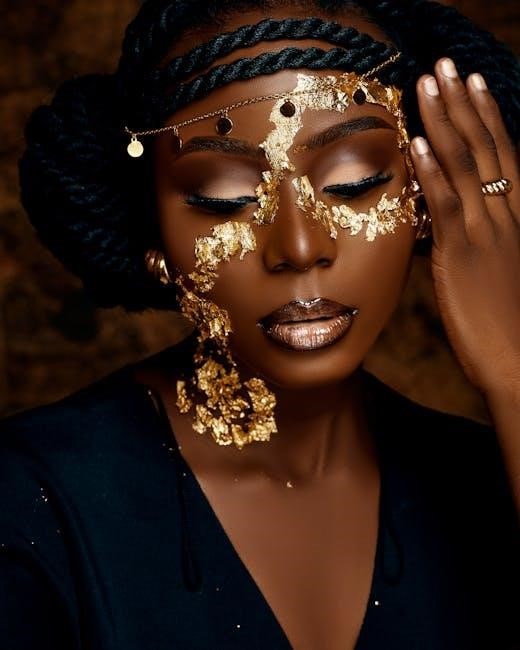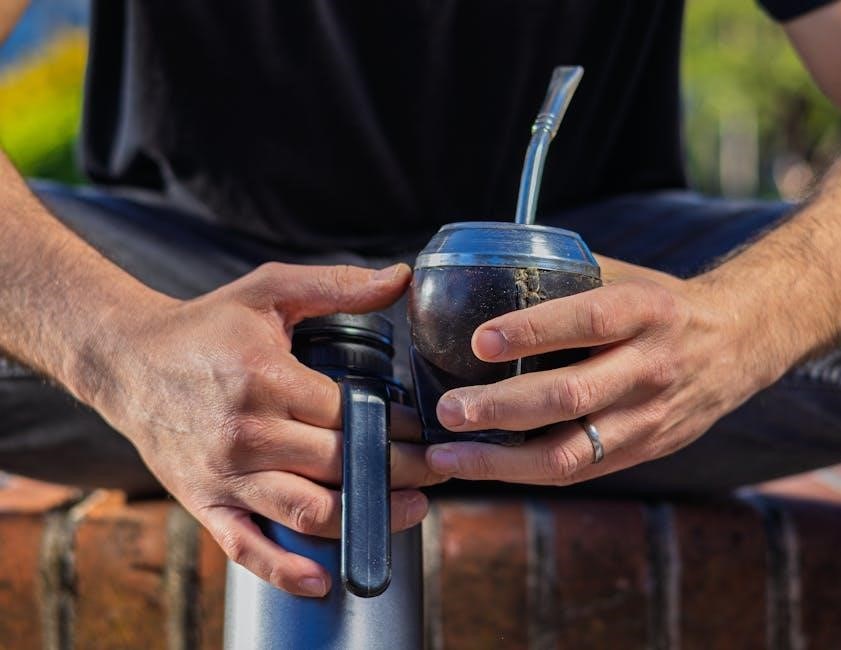Discover the ultimate guide to ring sizes in centimeters, ensuring a perfect fit for any occasion. Learn how to measure accurately and choose the ideal ring size effortlessly.
1.1 Importance of Accurate Ring Sizing
Accurate ring sizing is crucial for both comfort and aesthetics. A ring that is too tight can cause discomfort, while one that is too loose may slip off easily. Proper sizing ensures the ring stays securely in place without restricting movement. Additionally, accurate sizing is essential for the emotional and financial investment in rings, especially for engagement or wedding bands. Resizing a ring can be costly and may not always be possible, depending on the design. Therefore, measuring correctly is key to ensuring the ring fits perfectly and meets the wearer’s expectations for years to come.
1.2 Overview of Ring Size Measurement in Centimeters
Ring size measurement in centimeters involves determining the inner circumference of a ring to ensure a proper fit. This method is widely used globally, offering a universal standard for accurate sizing. By measuring the finger’s circumference or using a ring that fits, individuals can determine their size in centimeters. The process is straightforward: wrap a flexible measuring tape or a string around the finger, mark the overlap point, and measure the length in centimeters. This approach ensures consistency and ease of comparison across different regions and jewelers. It is particularly useful for online shoppers who cannot try rings before purchasing.

Understanding Ring Sizes Across Different Regions
Ring sizes vary globally, with the U.S., Europe, and Asia using different standards. Understanding regional measurements ensures accurate fits and simplifies international jewelry shopping experiences significantly.
2.1 Ring Size Standards in the United States
In the United States, ring sizes are typically measured using a numerical and alphabetical system, ranging from size 3 to 13.5 in quarter increments. To convert these sizes to centimeters, jewelers measure the inner circumference of the ring. For example, a size 6 ring corresponds to a 4.8 cm circumference, while a size 8 corresponds to 5.1 cm. This system ensures consistency across retailers and helps consumers find the perfect fit. The U.S. standard is widely used and trusted, making it easier for individuals to determine their ring size accurately, whether for engagement rings, wedding bands, or fashion jewelry.
2.2 Ring Size Standards in Europe
In Europe, ring sizes are typically measured using the circumference of the finger in millimeters. The standard sizing system ranges from 40 to 80, with each size representing a specific measurement. European countries often adhere to a uniform system, making it easier for consumers to determine their size across borders; The measurements are precise, with each size increasing by approximately 2 millimeters. This system ensures consistency and accuracy, allowing individuals to find the perfect fit without confusion. The European standard is widely recognized and trusted, making it a reliable choice for both local and international buyers.
2.3 Ring Size Standards in Asia
In Asia, ring size standards vary by country but often follow similar metrics to European systems. Many Asian nations, such as China, Japan, and India, use a diameter-based measurement system, where sizes are expressed in millimeters. For example, a size 7 in the U.S. corresponds to approximately 17.3mm in diameter in Asia. Some countries adopt a numerical scale, while others use alphanumeric systems. Regional preferences for tighter or looser fits also influence sizing standards. Understanding these differences is crucial for accurate measurements and ensuring the perfect fit when purchasing or resizing rings in Asian markets.
How to Measure Your Ring Size at Home
Use a ruler or string to measure the inside of a ring or your finger. Wrap the string around your finger, mark the length, and compare it to a ruler for accurate sizing in centimeters.
3.1 Using a Ruler or Measuring Tape
To measure your ring size using a ruler or measuring tape, start by placing the ring on a flat surface. Carefully align the ruler or tape with the inner edge of the band. Measure the diameter of the ring in centimeters, ensuring the ruler is straight and level. For accuracy, measure across the inner circle from one edge to the other. If the ring is not perfectly round, take the average of multiple measurements. This method provides a reliable way to determine your ring size in centimeters, helping you find the perfect fit for your finger.
3.2 Using a Printable Ring Size Chart
A printable ring size chart is a convenient tool for measuring your ring size at home. Simply download and print the chart, ensuring the scale is accurate. Place a ring that fits comfortably over the circles on the chart, matching the inner edge to determine your size. Alternatively, measure the circumference of your finger using a string or strip of paper and compare it to the chart. This method is quick, easy, and provides accurate results, helping you find the perfect fit without needing specialized tools. It’s ideal for those who prefer a visual guide to determine their ring size in centimeters.

Factors Affecting Ring Size
Finger size can change due to temperature, weight fluctuations, and medical conditions like edema. Humidity and ring band width also influence fit, requiring careful consideration for accuracy.
4.1 Finger Size Fluctuations Throughout the Day
Finger size naturally varies throughout the day due to factors like temperature, activity, and hydration. Typically, fingers are smaller in the morning and slightly larger by evening. This fluctuation can affect ring fit, making accurate sizing challenging. For instance, cold temperatures cause fingers to shrink, while heat or exercise can lead to swelling. Measuring at the same time daily ensures consistency. It’s best to measure when fingers are at their average size, usually late morning or early afternoon, to avoid extreme changes. Understanding these fluctuations helps in selecting a ring size that remains comfortable throughout the day.
4.2 Impact of Temperature on Finger Size
Temperature significantly affects finger size, influencing ring fit. In warmer conditions, fingers tend to swell, increasing ring size by up to half a size. Conversely, cold temperatures cause fingers to shrink, potentially making a ring feel tighter; This natural fluctuation highlights the importance of measuring ring size in a moderate environment. For accuracy, avoid measuring after intense physical activity or in extreme weather. Consider the average temperature when the ring will be worn most often. Accounting for these changes ensures a comfortable and secure fit, whether the ring is for daily wear or special occasions.
4.3 Effect of Ring Type and Style
The type and style of a ring significantly influence its size requirements. For instance, rings with wider bands may feel tighter, necessitating a slightly larger size. Similarly, rings with intricate designs or heavier tops might require adjustments for comfort. Materials like gold, silver, or platinum can expand or contract slightly with temperature changes, affecting fit. Additionally, styles such as comfort-fit rings are designed to sit more easily on the finger, potentially altering the ideal size. Understanding these factors ensures a more accurate fit, as different styles may require slight variations in sizing for optimal comfort and appearance.

Ring Size Chart in Centimeters
Explore a detailed ring size chart in centimeters, providing standard measurements for accurate fitting. Sizes range from 4cm to 10cm, correlating to international ring sizes for convenience.
5.1 Standard Ring Sizes in Centimeters
Standard ring sizes in centimeters are based on finger circumference measurements. Common sizes range from 4.0 cm to 10.0 cm, with increments of 0.5 cm. For example, a size 5.0 cm ring fits a finger with a 5.0 cm circumference. Measurements are typically taken at the base of the finger for the most accurate fit. The most popular sizes for women are between 5.0 cm and 7.0 cm, while men’s sizes often range from 6.0 cm to 9.0 cm. Using a ruler or a printable chart ensures precise sizing. Always consider the width of the ring band, as wider bands may require a slightly larger size for comfort.
5.2 Conversion of International Ring Sizes to Centimeters
Converting international ring sizes to centimeters is essential for universal compatibility. A standard conversion chart aligns sizes from different regions, such as the US, Europe, and Asia, with their metric equivalents. For instance, a US size 6 typically corresponds to 1.7 cm, while a European size 52 matches approximately 1.6 cm. The process involves measuring the inside diameter of the ring in millimeters and converting it to centimeters. This ensures accuracy for both online and in-store purchases. Always refer to a reliable conversion chart to avoid discrepancies, as slight variations may exist between regions and jewelers.

Determining the Perfect Ring Size for Different Occasions
Choosing the right ring size for different occasions is crucial. Engagement and wedding rings require precise fits, while fashion rings prioritize style and comfort.
Ensure the perfect balance for every event.
6.1 Engagement and Wedding Rings
Engagement and wedding rings hold sentimental value, making proper sizing crucial. These rings are often worn daily, so comfort and fit are essential. Measure during cooler parts of the day, as fingers swell in heat. Consider the ring’s width, as thicker bands require a slightly larger size. Ensure the ring sits snugly but not too tight, allowing easy movement. Accurate sizing prevents discomfort and ensures the ring stays in place. Consulting a jeweler for precise measurement is recommended, especially for such meaningful pieces. Proper fit ensures years of comfort and happiness, making your engagement or wedding ring a perfect, lasting symbol.
6.2 Fashion and Statement Rings
Fashion and statement rings are designed to make a bold impression, often featuring intricate designs or larger gemstones. When choosing the right size, consider the ring’s width and style. Wider bands may require a slightly larger size for comfort, while delicate designs might fit true to size. Trends often influence size choices, with some opting for oversized rings for a dramatic look. Measure your finger at the right time of day, as size can fluctuate. Ensure the ring sits comfortably without slipping off. Consulting a size chart or a jeweler can help you find the perfect fit for your fashion statement.

Tips for Accurate Ring Size Measurement
Measure your finger at room temperature and avoid sizing after extreme heat or cold. Use a ruler or printable chart for precise results, ensuring comfort and fit.
7.1 Measuring at the Right Time of Day
For accurate ring size measurement, timing is crucial. Fingers tend to swell slightly throughout the day, especially in the afternoon due to heat and activity. Measure your finger in the mid-morning or early afternoon when it is at its average size. Avoid measuring when hands are cold, as fingers are smaller, or after exercise, as they may be swollen. Consistency is key to ensuring the ring fits comfortably. By measuring at the right time, you can avoid resizing issues and ensure a perfect fit for your ring.
7.2 Considering the Width of the Ring Band
The width of the ring band significantly impacts the fit. A wider band (e.g., 6mm or more) may feel tighter, requiring a slightly larger size for comfort. Conversely, narrower bands (e.g., 2-4mm) fit more loosely, allowing for a smaller size. Measure your finger at the desired band width to ensure accuracy. For example, if you prefer a 4mm band, size accordingly to avoid a too-tight or too-loose fit. This consideration ensures the ring sits comfortably and looks proportionate on your finger.

Using Online Tools for Ring Size Calculation
Utilize online ring size calculators for precise measurements. These tools often require finger circumference in centimeters, providing accurate size recommendations based on international standards and styles.
8.1 Ring Size Calculators and Their Accuracy
Ring size calculators are online tools designed to help determine your ring size accurately using measurements in centimeters. They typically require you to input your finger circumference or use a printable chart. These calculators are convenient and save time, but their accuracy depends on precise measurements. Factors like finger size fluctuations and ring band width can affect results. While they are reliable for most users, professional jewelers may still recommend in-person sizing for the best fit. For optimal accuracy, measure your finger at the end of the day and consider the style of the ring you plan to wear.
8.2 How to Use Online Ring Size Guides
Using online ring size guides is a convenient way to determine your ring size in centimeters. Start by visiting a reputable jeweler’s website or a trusted ring size calculator. Most guides will ask for your ring size in your local measurement system or provide a printable chart. Simply input your known size or use the chart to measure your finger. Some tools also allow you to compare sizes across different regions. Ensure accuracy by measuring at the right time of day and considering the ring’s band width. Double-check your measurements to avoid errors. This method saves time and ensures a perfect fit.
Consulting a Professional Jeweler
Consulting a professional jeweler ensures accurate ring size measurement and personalized advice, leveraging their expertise and precise tools for a perfect fit across various ring types and styles.
9.1 Benefits of Professional Ring Sizing
Professional ring sizing offers unparalleled accuracy and personalized fit. Jewelers use precise tools to measure finger circumference, ensuring the ring sits comfortably without being too tight or loose. Their expertise accounts for factors like knuckle size and finger shape, which DIY methods often overlook; Additionally, professionals can provide resizing options and style recommendations, enhancing overall satisfaction. This service is particularly valuable for engagement or wedding rings, where a perfect fit is crucial. By leveraging their experience, you avoid costly resizing and ensure your ring wears beautifully for years to come. Professional sizing is a worthwhile investment for such an important accessory.
9.2 How Jewelers Measure Ring Size
Professional jewelers use precise tools to measure ring size accurately. They often employ a ring mandrel, a tapered cylinder, to determine the size by sliding the ring down to the widest part. Additionally, they use a ring stick or measuring gauge to find the exact fit. Jewelers also consider the ring’s width and style, as these factors can affect comfort and sizing. Some jewelers use digital scanners for highly accurate measurements. The process typically involves trying on sample rings and adjusting based on fit preferences. This method ensures a perfect fit, combining traditional techniques with modern technology for optimal results.
Maintaining Your Ring Size Over Time
Monitor finger changes due to weight, health, or aging. Regular resizing ensures comfort and proper fit, with professional jewelers offering expert adjustments for lasting wear.
10.1 Adjusting to Changes in Finger Size
Finger sizes can change due to weight fluctuations, health conditions, or temperature variations. To maintain a comfortable fit, monitor your ring size regularly. If your finger size increases or decreases significantly, consider resizing your ring. Professional jewelers can adjust the band to accommodate changes. Additionally, using ring guards or adjusters can provide a temporary solution. Seasonal changes, such as swelling in warmer months, may require a slightly larger size. Always measure your finger at the same time of day for consistency. Regular checks ensure your ring remains comfortable and secure, preventing damage or loss. Stay proactive to enjoy your jewelry long-term.
10.2 Resizing Options for Rings
Resizing a ring is a common solution to ensure a perfect fit. Jewelers often use methods like stretching, soldering, or cutting the band to adjust the size. However, resizing options vary depending on the ring type and material. For example, rings with intricate designs or certain metals like tungsten may be difficult to resize. Some jewelers offer lifetime resizing policies, while others charge a fee. Regular maintenance, such as cleaning and inspections, can help prevent extreme size changes. Always consult a professional to determine the best resizing method for your ring, ensuring it remains comfortable and secure.

Cultural and Stylistic Preferences in Ring Sizing
Cultural preferences influence ring fit, with some regions favoring loose styles and others opting for snug designs, reflecting local traditions and fashion trends.
11.1 Regional Preferences for Loose or Tight Fit
Regional preferences for ring fit vary significantly. In Western countries, a snug fit is often preferred, especially for engagement and wedding rings, to ensure durability and comfort. Conversely, in some European cultures, a slightly looser fit is favored for ease of movement. In Asia, preferences lean toward a more tailored fit, balancing comfort and security. These regional differences are influenced by lifestyle, climate, and cultural norms. For instance, warmer climates may opt for a looser fit due to finger swelling, while colder regions prefer tighter rings. Understanding these preferences helps in selecting a ring size that aligns with both personal and cultural comfort.

11.2 Impact of Jewelry Trends on Ring Size Choices
Current jewelry trends significantly influence ring size preferences, with fashion often dictating larger or more statement pieces. As styles evolve, consumers may opt for rings that fit loosely or tightly to align with aesthetic trends. For instance, minimalist designs might favor slender bands, while bold statement rings could require slightly larger sizes for comfort. Cultural and fashion trends also play a role, with some regions embracing oversized rings as a status symbol. Staying informed about these trends helps in selecting a ring size that balances personal style with comfort, ensuring the perfect fit for both everyday wear and special occasions.
Accurate ring sizing in centimeters ensures comfort and style. Measure carefully, consider factors like temperature, and use tools for the best fit. Happy shopping!
12.1 Summary of Key Points
This guide provides a comprehensive overview of ring sizing in centimeters, emphasizing the importance of accurate measurements for a perfect fit. It explores regional size standards, practical methods for measuring at home, and factors influencing finger size. The guide also offers tips for choosing the right size, including timing, ring width, and professional consultations. By understanding these elements, you can confidently select or design a ring that fits comfortably and suits your style. Whether for engagement, fashion, or everyday wear, this guide ensures you make informed decisions for the ideal ring size.
12.2 Final Tips for Choosing the Right Ring Size
When selecting the perfect ring size, consider factors like finger shape and lifestyle. Measure at room temperature, as fingers swell in heat and shrink in cold. Opt for a snug fit that slides on easily. For wider bands, choose a slightly larger size. If unsure, consult a jeweler for professional sizing. Remember, rings can often be resized, but accuracy ensures comfort and longevity. Prioritize comfort and practicality while making your choice, ensuring the ring complements your style and preferences perfectly.
Resources for Further Reading
Explore trusted resources like Blue Nile and Tiffany & Co. for detailed guides. Printable charts from Etsy and tools from James Allen aid accurate sizing.
13.1 Recommended Websites for Ring Size Guides
For accurate ring size measurement, visit trusted websites like Blue Nile, James Allen, and The Spruce Crafts. These platforms offer detailed guides, printable charts, and conversion tools to ensure the perfect fit. Brilliant Earth and Zales also provide comprehensive ring size calculators, while WikiHow offers step-by-step tutorials. These resources are essential for determining your ring size in centimeters, whether you’re shopping online or in-store; Use these reliable tools to avoid sizing mistakes and find the ideal fit for your ring.
13.2 Suggested Tools for Measuring Ring Size
For accurate ring size measurement, use a ruler or measuring tape to measure the inner circumference of a ring or the finger. A printable ring size chart is another convenient option, allowing you to compare sizes at home. Digital calipers provide precise measurements, while a ring size gauge tool offers a physical reference. Additionally, online ring size calculators and apps can help estimate size based on finger measurements. These tools ensure accuracy and convenience, making it easier to determine the perfect fit for any ring. Always measure carefully to avoid sizing errors and ensure comfort and satisfaction with your ring choice.